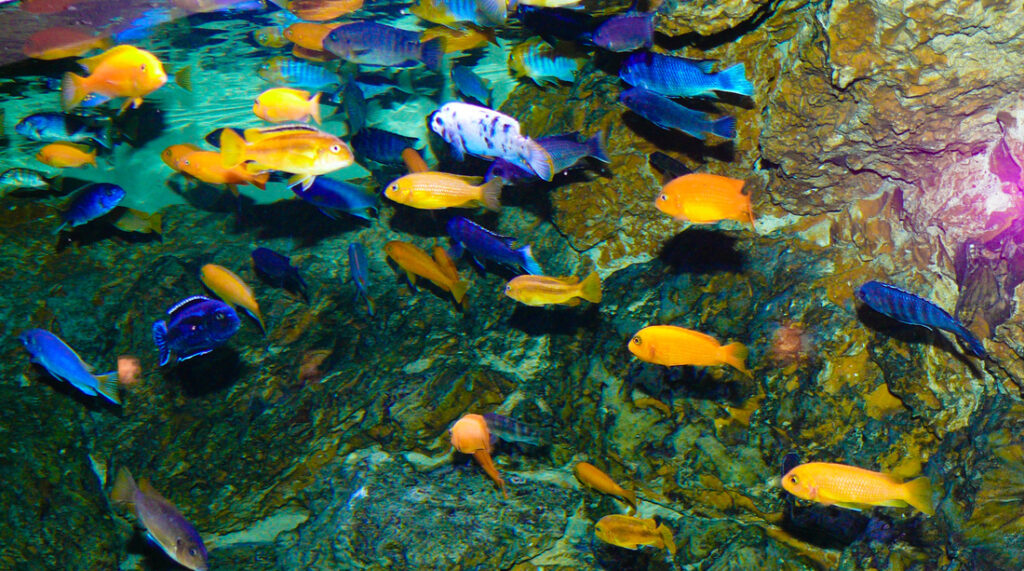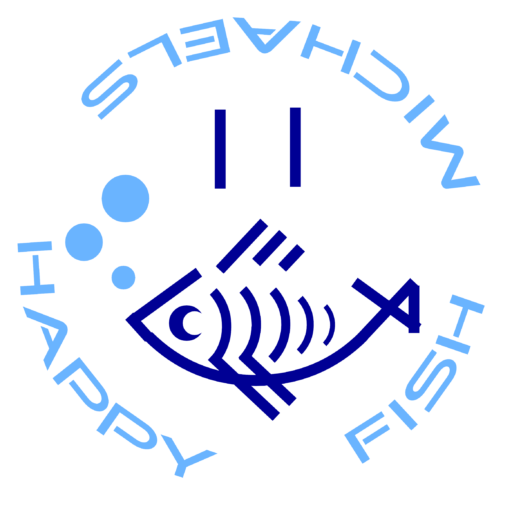- Your cart is empty
- Continue Shopping
African Cichlids Care Sheet
Poor Man’s Saltwater Fish

There are hundreds of cichlid species that are native to Africa, however, the term “African Cichlids” is typically used to describe cichlid fish found in Lakes Tanganyika, Malawi and Victoria, in East Africa’s Great Rift Valley. Most Rift Lake cichlid species are endemic to one specific lake, however, they have been introduced to many parts of the world including the southern United States. Their colors rival those of marine fish but being easier to keep and usually less expensive, they are sometimes described as “poor man’s saltwater fish”.
An African Rift Lake Cichlids Natural Habitat
Rift Lake cichlids occupy virtually every niche known to freshwater fish. They can be found in open water, boulder fields, sand flats and weed beds. A number of species from Lake Tanganyika even occupy and breed in empty snail shells and are referred to as shell-dwellers. It is important to know the natural habitat of each species you intend to buy when designing a Rift Lake cichlid aquarium layout.
Water Requirements for African Cichlids
The water in the African Rift Lakes has a pH between 8.0 and 9.0 and alkalinity from 10° to 25° dKH (180 ppm to 450 ppm). Temperatures range from 74° to 80° F. If the aquarium is kept in a room below 74° F, use a trusted aquarium heater brand to maintain the correct temperature. The vast majority of Rift Lake cichlids sold today are commercially raised and tolerate a wide range of water parameters. Crushed coral gravel can be used to help maintain proper pH and alkalinity. Maintain good filtration and change 10% of the water every week or 25% every 2 weeks using an Aquarium Water Changer or Siphon Vacuum Gravel Cleaner. Don’t forget to treat tap water with Prime Water Conditioner before refilling your aquarium!
Housing Recommendations for African Cichlids
Because most Rift Lake cichlids tend to grow larger and males become territorial, an aquarium of at least 55 gallons is recommended. Aquariums with wider footprints are better than tall, narrow tanks because they offer more bottom area for fish to occupy. Dwarf species from Lake Tanganyika can be kept as communities in 30 to 50 gallon aquaria or in species tanks of 15 to 20 gallons. The aquarium should be well decorated with rocks and other objects to create caves, grottos and overhangs. Use caution when decorating with driftwood, as some types of wood may cause a drop in pH and alkalinity. Many Rift Lake cichlids love to dig and will move gravel and sand around the aquarium.
African Cichlids Behavior/Compatibility
Rift Lake cichlids are territorial and males in particular can be aggressive towards each other. Crowding them a little often reduces aggression. Mixing cichlids from other parts of the world with Rift Lake cichlids is not recommended, as they may require different water chemistry and they “speak different languages”, meaning they will try to communicate in ways the RLC’s do not understand, often resulting in harm to one or both fish. When building a Rift Lake cichlid community, start with juvenile fish and introduce less aggressive species first. When introducing new fish to an existing population, add a few more rocks and rearrange existing décor to create “new” territories. Avoid adding more than one male of the same species, especially if females are present. If you want to try adding non-cichlid fish to your RLC aquarium, select hardy, fast moving species like giant danios, tinfoil barbs, redtail, rainbow, and black sharks, or Synodontis catfish. New purchases should be at least the same size as the largest or most aggressive fish in the aquarium. Always consult an aquarium expert before buying any new fish for your aquarium.
What Do African Cichlids Eat?
While many Rift Lake cichlids are omnivores and should be fed a variety of foods, Lake Malawi mbuna cichlids are largely herbivorous, feeding on algae mats and small shrimp that live amongst the algae. They do best on a combination of Spirulina Flakes, Algae Rounds, Cichlid Pellets and Shrimp Pellets. Haplochromis, Copidochromis, Nimbochromis and related species, as well as dwarf Tanganyikan cichlids, are carnivores and will thrive on Cichlid Pellets, Shrimp Pellets, Tropical Flakes and Tropical Granules. Some vegetable matter should also be included in their diet. Avoid fatty foods like beef heart and bloodworms, as these may cause digestive problems for your Rift Lake cichlids. For best results, rotate your fishes’ diet daily and feed only what they can consume in under 2 minutes, once or twice a day.
African Cichlids Breeding Level – Easy to Difficult
Rift Lake cichlids can be prolific breeders and incidental spawning of many species in home aquariums is common. All cichlids practice some sort of parental care, and many species of RLC’s are mouthbrooders, where the female incubates the eggs in a special pouch in her throat until they hatch and are able to fend for themselves. A separate breeding tank should be set up if you want to intentionally spawn a particular species of Rift Lake cichlid.


